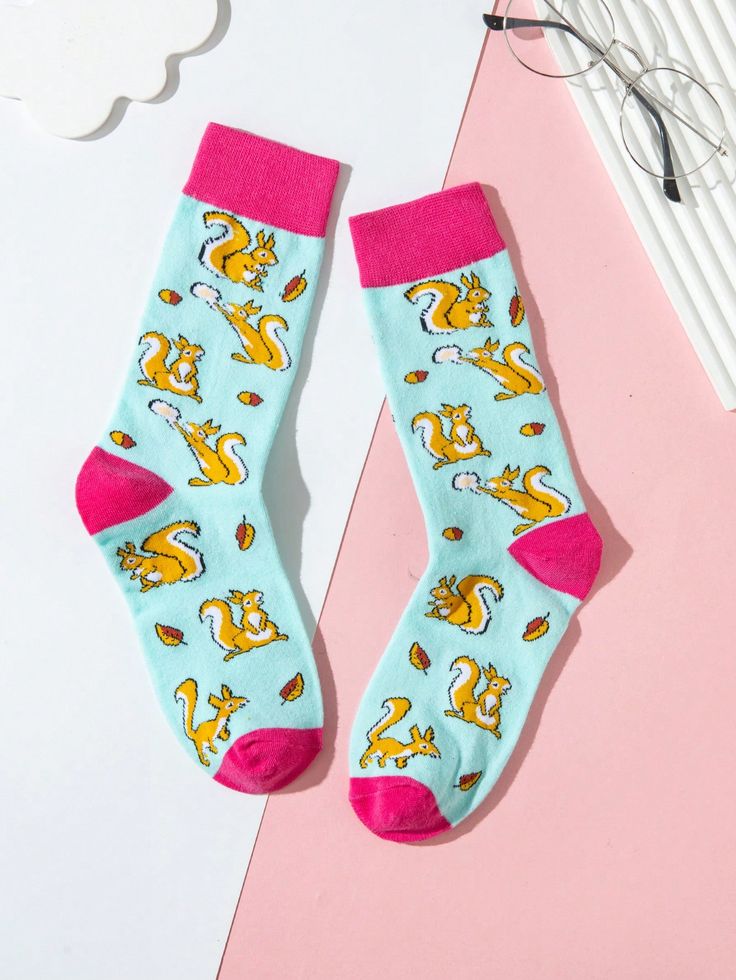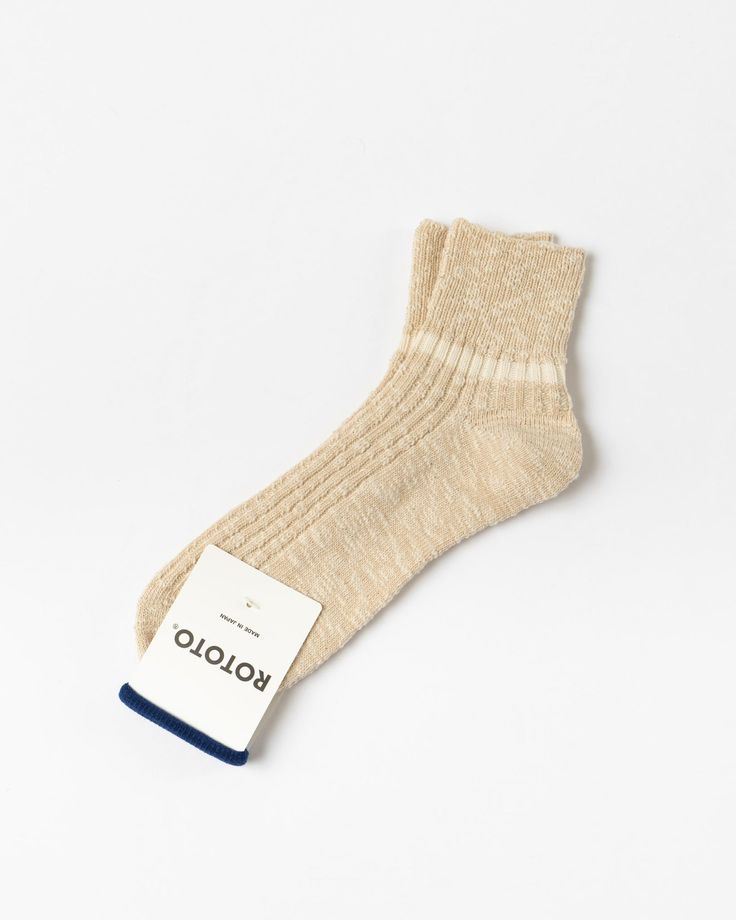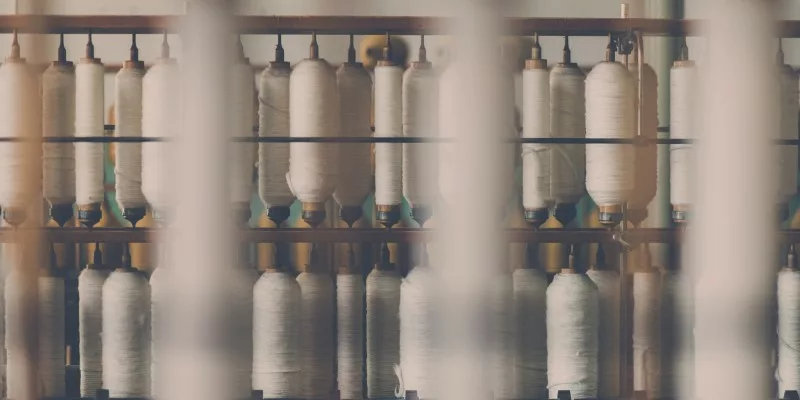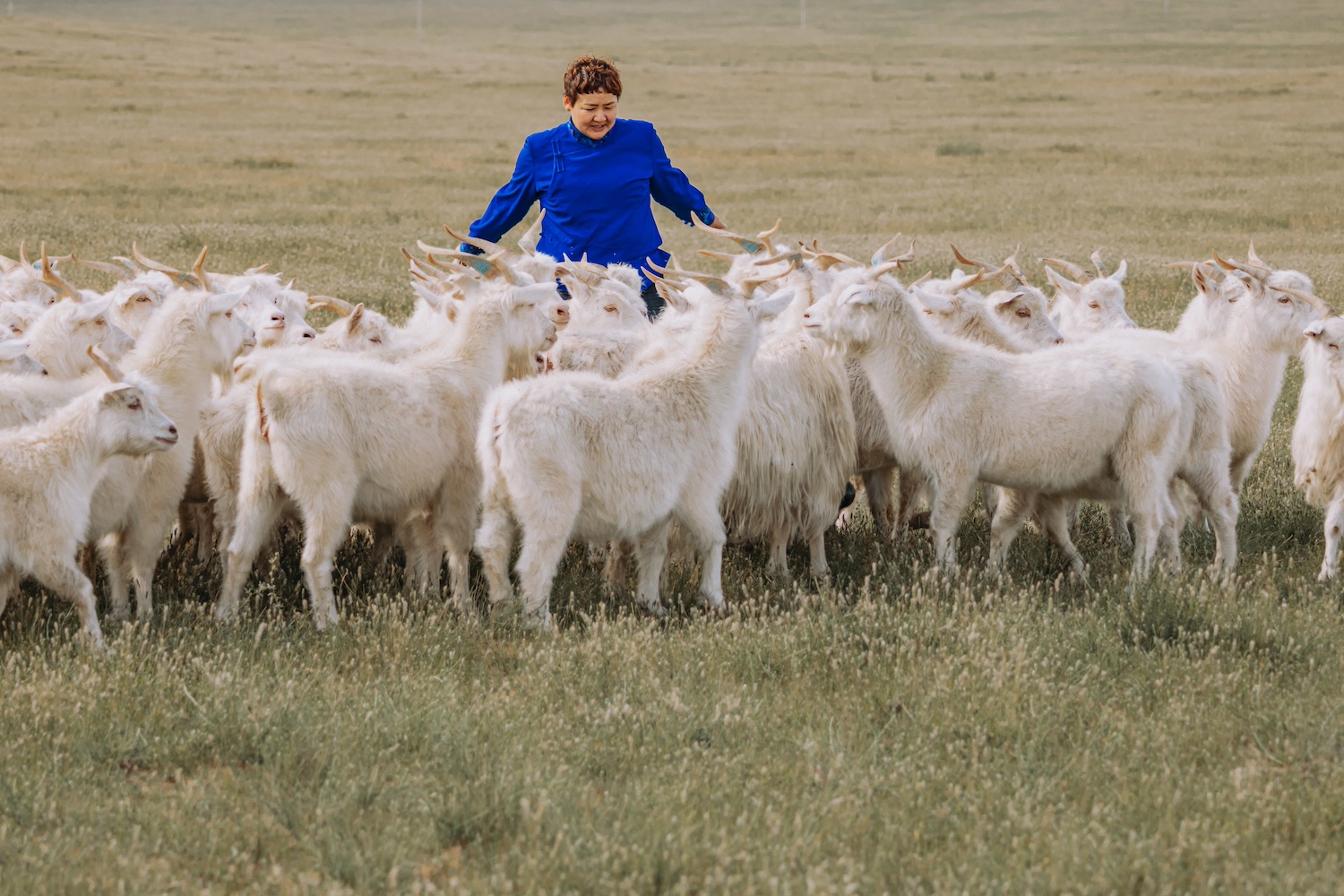The top merino wool base layers to keep you comfortable anywhere
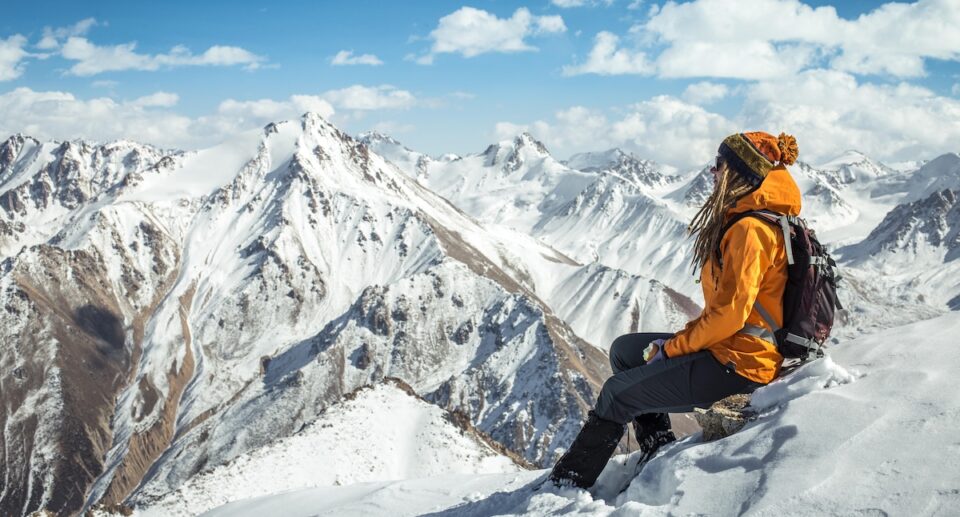
By clicking on the featured links, visitors will leave nationalgeographic.com and be directed to third-party e-commerce sites that operate under different terms and privacy policies. As a participant in multiple affiliate marketing programs, National Geographic will earn a commission for certain purchases. See full disclaimer below.*
For centuries, merino sheep have been raised for their wool, which is renowned for its softness, making it a good choice for base layers and undergarments. But there is much more that makes merino wool “a miracle fiber,” says Rita Kourlis Samuelson, the deputy director of the Colorado-based American Wool Council.
“What makes [merino] wool comfortable next to your skin is the fineness of the fiber,” she says. “When you choose [merino] wool [clothing], you know that it’s going to be biodegradable, reusable, flame-resistant, water-repellent, and sustainable.”
The fabric is also known for its moisture-wicking properties that prevent odor-causing bacteria from building up. As a result, merino wool stays fresh for longer and helps to keep sweat and odors at bay.
These days, travelers can find tons of merino wool clothing, from undergarments to hoodies. As longtime travelers, we’ve worn plenty of merino wool base layers. Here are all of our favorites.
Our picks for the best merino wool base layers
The best merino wool base layers
Merino wool is naturally temperature regulating, moisture-wicking, and odor resistant, making it an ideal material for base layers. Because you’ll likely be wearing other clothes on top, base layers should feel soft to the touch and fit comfortably (not too tight nor too loose). The high-performance merino base layers on our list are made with 100-percent merino wool or blended with other functional fabrics. Read on for all the details for each piece, plus our shopping tips.
Why we like it: Smartwool’s base layer works well for year-round adventures. The leggings-inspired design features a wide elasticized waistband plus improved stitching that adds even more stretch than previous versions. The medium size for both men and women has a 31-inch inseam, which is enough to cover the ankles on a 5-foot-7-inch person. On someone taller, these would fit like cropped leggings.
Overall, this is a lightweight, multifunctional piece that can be worn under joggers, jeans, or hiking pants. Composed of mostly merino wool, the fabric has a jersey-like softness that’s comfortable for daily wear.
Keep in mind: This base layer contains recycled nylon, which is not ideal if you’re concerned about sustainability. The pants tend to stretch a bit, which could lead to some see-through. These base layers are best for most cold climates, but not freezing temperatures.
Product details: Sizes: Women’s: XS-3XL; Men’s: S-XXL | Composition: 88% merino wool, 12% nylon
(Make the most of your ski vacation with tips from an Alaskan mountaineer.)
Why we like it: Swiss sportswear company Mammut produces gear, accessories, and clothing for alpine skiing, mountaineering, and trekking. This merino wool base layer is part of the “Trift line,” which the company says helps travelers stay warm and active in the coldest climates without sacrificing performance, movement, or comfort.
The top has a close-fitting silhouette with extra-long sleeves for more hand coverage. The high neckline helps lock in warmth, but there’s a zipper in front to help cool you down. With eight percent spandex, there’s enough stretch for skiers, snowboarders, or anyone participating in high-energy activities. There’s also plenty of stretch in the tights, in the front and back panels around the knees.
Keep in mind: The fabric is a polyamide blend, which the company claims helps with durability and drying, but this may affect the material’s odor-resistance and breathability.
Product details: Sizes: XS-XL | Composition: Merino wool, polyamide
Best women’s merino wool base layer: Wild Rye Half-Zip
Why we like it: This casual top is made with fine merino wool fibers and has plenty of everyday wear potential. We love how soft this shirt feels against the skin, but its best features come with the design. Functional details such as thumbholes, stretchy stitches, and a half-zip add versatility, so you can wear this top during casual winter hikes or during more active pursuits like skiing and snowboarding.
Keep in mind: The thumbholes might be short if you are taller than five-feet-10-inches. This top comes in only two colorways: eggplant and a retro-style pattern.
Product details: Sizes: 0-18 | Composition: 100% merino wool
Why we like it: This pair of midweight bottoms blends high-performance nylon with the natural qualities of merino wool. The fabric also has some stretch, helping to ensure a snug fit for easy layering and maximum warmth.
The slim elasticized waistband adds comfort, while the ergonomic panels help with unrestricted movement. With a 32-inch inseam on the large size, these offer taller people below-the-ankle coverage. We also appreciate that the merino wool is ethically sourced.
Keep in mind: This base layer is treated with silver nitrate to improve odor resistance. This is a chemical compound that enhances UV protection and prevents bacteria buildup. The health risk from exposure to silver nitrate to humans is low, but when washed, silver-treated clothing can leak into the water supply.
Product details: Sizes: S-XXL | Composition: 95% wool, 5% elastane
(Pack these Antarctica essentials for any winter trip.)
Best merino wool socks: Bombas Merino Wool Blend Calf Socks for Women and Men
Buy it now at Bombas (Women’s; Men’s)
Why we like it: Merino wool is excellent sock material due to its moisture-wicking and odor-resistant qualities. They’re especially great for year-round hiking.
This pair of crew socks have a cushioned footbed and offer light arch support for comfort. The elasticized fabric and cable knit pattern help keep the socks up without bunching up in your shoes. The company also offers a five percent discount on four-packs, featuring styles in different colors and patterns.
Keep in mind: There is some polyester and elastane in these socks, so they are not fully biodegradable. We noticed light pilling after the first wash.
Product details: Shoe sizes: 4-13 | Composition: 79% merino wool, 19% polyester, 2% elastane
Best merino wool T-shirt: Patagonia Capilene Cool Merino Shirt for Women and for Men
Why we like it: This sporty crewneck makes a great year-round layering piece. It has a slightly fitted silhouette but doesn’t feel restrictive. The design features set-in sleeves for ease of movement, while the hemline has side slits for ventilation.
Additionally, this tee is constructed with a blend of merino wool and polyester to improve the product’s performance—expect better moisture-wicking and quick-drying qualities. Many Patagonia tops, including this one, have a loop at the back of the neckline so you can hang it.
Keep in mind: The slightly longer drop tail back on the women’s style may not be everyone’s cup of tea.
Product details: Sizes: XS-XXL | Composition: 65% merino wool, 35% recycled polyester jersey
Why we like it: Icebreaker produces this bikini slip from some of the finest merino wool fibers, which translates to an ultra-lightweight and soft surface. The fit is modern and slim, with a low-rise to mid-rise silhouette and medium coverage at the back. The fabric has some stretch to conform to the body, and the waistband keeps the bikini in place. We like that this style comes in classic and unconventional colors, such as sage and orange.
Keep in mind: Some customers find the bikini style fits too tight and lacks coverage in the back. The style only goes up to extra large.
Product details: Sizes: XS-XL | Composition: 83% merino wool, 12% nylon, 5% elastane
Why we like it: Unbound Merino’s boxer briefs are fairly classic, with a 5.5-inch inseam on all sizes and a tag-free elastic waistband. Nylon helps enhance moisture-wicking and quick-drying abilities, while the spandex helps provide a comfortable fit without being too snug. These boxer briefs are also machine washable.
Keep in mind: These boxers have a flattering mid-rise design, but some people may find the waistband too tight.
Product details: Sizes: S-XXL | Composition: 84% merino wool, 12% nylon and 4% spandex
Buy it now at Branwyn
Why we like it: This ultrasoft merino wool bralette is a great everyday option for running errands, strolling, or light physical activity. Designed without underwires, it slips on and has straps you can cross in the back for wearing with racerback tanks. The front has a low V-neckline, so you can wear it with pretty much anything without worrying about it peeking through.
Keep in mind: This bra is not padded and doesn’t have pockets for pads. Its similar in style to sports bras but doesn’t offer much support. It’s best for C or smaller cup sizes.
Product details: Sizes: XS-XXL | Composition: 81% merino wool, 12% nylon, 7% spandex
Best merino wool thermals: Bionic Base Layer Pants for Women and Men
Buy it now at Bionic (Women’s; Men’s)
Why we like it: Bionic’s Italian-made base layer bottoms are designed for breathability and temperature regulation on a cold day. The company’s patented technology features panels of densely knitted fabric to help maximize warmth (they act like padding but add no extra bulk) while keeping your body cool and dry.
The blended fabric offers medium compression for support, however it doesn’t restrict movement or feels tight, even if you wear them under a standard pair of snow pants.
Keep in mind: Some people may find the compression a little uncomfortable at first. If you’re looking for a jersey-like thermal layer for everyday wear, this one might not work. However, we think it’s excellent for winter sports.
Product details: Sizes: XS-XL for women and S-XXL for men | Composition: 87% merino wool, 12% polypropylene, 1% elastane
(These are the best winter jackets for men and women.)
Why we like it: These sweatpants are comfortable enough to sleep in. They’re made from heavyweight merino fabric spun from ultrafine fibers, so they feel extra soft and have a nice structure and thickness. The tapered silhouette fits close to the body but is loose enough for easy movement, without looking slouchy. The pull-on elastic waistband doesn’t cut into your skin the way some leggings can. We love that there are three pockets—the right side has a second hidden zippered pocket that can fit smaller valuables.
Keep in mind: This pair of joggers reaches the ankles on someone 5-foot-7-inches tall.
Product details: Sizes: XS-XL | Composition: 69% merino, 29% Tencel, 2% spandex, French terry
Best affordable merino wool layer: Quince 100% Merino Wool All-Season Long Sleeve Base Layer for Women and Men
Why we like it: Quince has built a reputation for making high-quality classic essentials at lower prices. This long-sleeve top is no exception. The crew neckline makes it especially versatile—you can wear it under another layer, but you still get all the benefits of pure merino wool when you wear it alone. We also love that the jersey-like feel offers a lived-in softness.
Keep in mind: Since this top is made of 100-percent merino wool, it doesn’t have much stretch. We suggest sizing up for a roomier fit.
Product details: Sizes: S-XXL for men, XS-XL for women | Composition: 100% merino wool jersey
Why we like it: Standard base layers are usually not meant to be worn alone; some can be see-through. These tights offer the comfort of a soft merino wool base layer and the thickness of leggings. They have a high rise and an adjustable, wide waistband, plus a slide pocket that’s deep enough for credit cards and a regular-sized smartphone.
We love that they don’t fit too tightly, so they’re just as comfortable for traveling or outdoor activities, yet still look nice with a shirt dress or a skirt.
Keep in mind: These tights have a cropped silhouette, so you may need to wear them with liners or crew socks to cover your ankles. We also wish they had a second side pocket.
Product details: Sizes: XS-XL | Composition: 97% merino wool, 3% elastane
(The perfect wrinkle-free clothing to pack for your next trip.)
Why we like it: This classic beanie with a roll cuff is an essential for winter activities. The double fabric construction helps lock in warmth, but you can easily wear it under a jacket hood in freezing temperatures. We also appreciate the more than 10 colors and patterns.
Keep in mind: This beanie comes in one size, which is best for a head circumference between 21.5-23.5 inches.
Product details: Sizes: One size | Composition: Merino wool
How we chose the best merino wool base layers
While merino wool clothing is excellent year-round, its quality varies based on factors such as fiber coarseness, fabric weight and construction, material blend, silhouette, and style. Here’s how we curated our list of the best merino wool clothing and accessories.
• Third-party reviews: For each product on our list, we sifted through dozens of customer reviews on retail and editorial websites. We also considered the opinions of fellow travelers and outdoor experts to ensure consistent experience and quality.
• Fiber diameter: Where available, we looked at technical specifications, such as fiber coarseness. But we paid particular attention to diameter because that can impact how soft the clothing feels.
• Fabric weight: Merino wool comes in different weights: light, medium, and heavy. These weights are based on fabric thickness and indicate what season, temperatures, and activities each piece is most suitable for.
• Fabric content: We looked at the composition of each product because merino wool is often blended with other materials to enhance performance and durability. The composition also affects the product’s biodegradable qualities.
• Fit: Comfort largely depends on a product’s fit and cut. Base layers—both tops and bottoms—are usually designed to fit closer to the skin.
• Brand reputation: We factored in a company’s history, known production practices, and reputation among outdoor experts to determine a product’s quality and durability.
Tips for buying merino wool base layers
Consider the fabric weight
Merino wool weight is measured in grams per square meter (gsm). Some companies list the fabric weight in the product description, giving customers a good idea of the climates the product is best suited for.
“A higher weight is better for colder conditions and vice versa,” says Noah Bryan, general manager of North America for Icebreaker and Smartwool and an avid outdoor enthusiast. Lightweight fabrics that can be worn year-round usually vary in weight from 150 to 190 gsm. Midweight merino wool (200-300 gsm) is best for colder weather. Heavyweight (300+ gsm) merino wool is designed for maximum warmth and insulation.
Composition matters
Wool is often blended with other fibers to increase the functionality and performance of a product. According to Kourlis Samuelson, the combination of wool and rayon, as well as wool with a small amount of polyester, “can be very comfortable next to the skin.”
To increase elasticity (in wool socks or wool tights, for example), some companies add spandex—usually less than 10 percent. Tencel and merino wool are an excellent warm-weather combination with superior moisture-wicking and breathability.
However, most of the product’s composition should be pure merino wool to maximize its natural qualities, Kourlis Samuelson adds.
Knitted vs. woven fabrics
Knitted items are made from a single yarn that forms a braided pattern, while woven clothing is produced with multiple yarns. “With knitwear items, there is a lot more flexibility in movement,” says Kourlis Samuelson. Most merino wool base layers are knitted. However, if you notice a crisscross pattern in the fabric, chances are it is woven and probably not going to be very stretchy.
Keep sustainability in mind
Merino wool is a renewable material since merino sheep grow their wool year-round. In addition, merino wool fibers are made from keratin proteins, also found in human hair, which makes the fabric fully biodegradable, both in water and soil. A New Zealand study found that wool products will decompose by 20 percent in just three months and can serve as fertilizer. That’s why it is best to invest in 100-percent merino wool products. Those made of synthetic blends take longer to break down and deposit microplastics into the environment.
Organic wool vs. regular wool
By definition, merino wool is organic. However, some clothing is advertised as “organic wool.” According to the International Wool Trade Association (IWTA), this means that the wool has been grown without the use of veterinary chemicals or treatments against parasitic insects, such as lice. However, the organization, which is involved in the formulation of quality standards for organic wool, also states that “the organic label does not mean, by implication, that all other types of wool are not safe and healthy.”
Consider merino wool clothing for hiking
“With cold-weather hiking in mind, specifically, it’s great to know that [merino] wool can help a hiker stay better insulated … in low temperatures,” says Maggie Peikon, communications manager at the American Hiking Society, based in Moab, Utah.
An avid hiker, Peikon adds that because merino wool is odor-resistant, it’s especially ideal for hiking socks, which she wears for hiking year-round.
Frequently asked questions
What is merino wool?
Merino wool is a fine, soft fiber that comes from the wool of merino sheep raised in Australia, New Zealand, South Africa, and certain South American countries. The sheep, which were first bred in Spain in the 12th century, are known for being able to withstand extreme weather conditions. Their fleece is dense, but the fibers are ultra-fine and non-scratchy, which makes the wool excellent for undergarments and base layers.
What are the benefits of merino wool clothes?
One of the most unique qualities of merino wool is its fineness. “Unlike traditional wool, merino wool is extremely soft and comfortable against the skin, making it popular for clothing,” says Bryan.
Wool is naturally hypoallergenic because it is made of the same keratin protein found in human hair. A 2016 study by Murdoch Children’s Research Institute found that children who wore superfine merino wool showed a significant decrease in eczema symptoms (a 2017 medical paper arrived at the same conclusion).
One hundred percent merino wool clothing is also flame resistant. When it burns, it doesn’t melt or stick to the skin and produces less toxic gases than synthetic fabrics.
However, some of the most popular attributes of merino wool clothing, especially among outdoor enthusiasts, are its odor-resistance and moisture-wicking qualities. This type of fine wool is breathable and can absorb up to 35 percent of its weight in moisture, which it then releases into the air, keeping it away from the skin.
Lastly, wool blocks the sun’s harmful UV rays, making merino wool clothing an excellent natural alternative to polyester sunwear.
How to wash merino wool?
Merino wool is naturally resistant to bacteria buildup, which makes it odor-resistant. The material is also stain-resistant thanks to a natural anti-static layer. That means that merino wool clothing doesn’t require as much washing as other types of clothing. According to the IWTA, merino wool clothing can simply be aired out.
Before washing merino wool garments, check the care label. Most merino wool clothing can be machine washed with cold water and neutral or mild detergent on the delicate cycle.
“It [merino wool] is easy care. It can be put in the washing machine and tumble dry, but only if it says so on the label. Otherwise, you need to either hand wash it and air dry it or dry clean it,” says Kourlis Samuelson. Avoid drying wool clothing in direct sunlight or on top of radiators.
How to wear merino wool base layers?
“Layered clothing is important for temperature regulation in all seasons,” says Peikon. She highlights the efficacy of a three-piece layering system consisting of a base layer, a midlayer, and an outer layer. “It allows you to remove or add layers as needed to stay comfortable—and protected from the elements,” she says.
Due to merino wool’s natural softness, you don’t need to wear anything under your lightweight base layers.
How to store merino wool clothing?
Merino wool clothing is easy to store. Simply clean and fold your clothes and store it in a dry place away from direct sunlight. Moths and silverfish are wool’s biggest enemy (they are attracted to the keratin, a food source for their larvae). Storing lavender sachets or cedar chips (or a combination of both, like this one sold on Amazon) with your clothes can help.
Dobrina Zhekova is a lifestyle journalist based in Alexandria, Virginia. She specializes in travel and design and has written about a variety of topics, plus product reviews, for numerous online publications, including Travel + Leisure, Forbes, Vogue, and Departures.
*Although we are sharing our personal opinions of these experiences or products with you, National Geographic is not endorsing these experiences or products on behalf of anyone. It has not performed product safety testing on any of these products, did not manufacture them, and is not selling, or distributing them and is not making any representations about the safety or caliber of these products or experiences for individual consumers. Prices and availability are subject to change from the date of publication.



